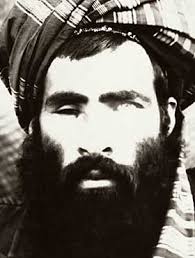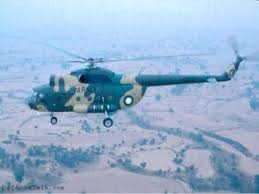

Waziristan: name the names
Saturday, November 07, 2009 (The News)
Farhat Taj
The points that Ayaz Wazir (Oct 30) raised in response to my article (Oct 26) endorsed some of the arguments that I have been making in these pages -- i.e., the previous military operations in Waziristan were not targeted and the leadership of the Taliban terrorists was tacitly given safe passages to escape. The operations ended with suspicious "peace deals" with the terrorists in complete disregard to the people of Waziristan, who wished complete elimination of the Taliban. All this has been stage-managed in pursuit of foreign-policy goals in Afghanistan.
I have a comment on Ayaz Wazir's article, and an explanation. The comment is about the questions he raised. Who was responsible for the collapse of the three institutions around which the tribal system revolved? Was it done by the tribesmen themselves? Was it done by a foreign power or non-state actors within the country? Who elevated Nek Mohammad overnight to heights of popularity by entering into a deal with him? Who was threatening Waziristan's Yargulkhail tribe of dire consequences? It certainly was not the tribesmen to be blamed for the collapse of the system.
The time to pose these questions is gone. I would request the educated people of Waziristan to name those who engineered creation of the Taliban and imposed them on Waziristan. Privately, the people of Waziristan (and Pakhtuns in general) hold state elements responsible for that. Publicly, they do not speak out.
Coming to the explanation regarding my comparison between the educated people of Swat and Waziristan, the latter may not be as integrated in the state structure of Pakistan as Swat, but most educated people of Waziristan are just as integrated in the state and society of Pakistan as those of Swat. It is unlikely that lack of integration of Waziristan might have prevented them from doing what the educated people of Swat did: use of modern technological tools and interaction with the media to highlight the brutal Taliban occupation of Swat.
When the crisis started in Swat, many Swatis created blogs and constantly informed the world about Taliban atrocities in their area. Many composed poetry and songs about the human sufferings there, and put them on YouTube. Countless Swatis were in constant contact with media people and op-ed writers, including myself. They sent us information which they wished to be presented in the media. They were complete strangers. I often cross-checked their information with my sources in Swat and mostly, their information was correct. This is something that I have not seen coming from the educated people of Waziristan.
The Swatis made a world impact in a shorter time than Waziristanis: many people around the world came to know that the people of Swat were suffering Taliban atrocities. Many Swatis worked with fake names and identities, since there was no need to show bravado, given the security situation.
Because the educated people of Waziristan are silent, people around the world and in Pakistan have provided their own answers to questions like those raised by Ayaz Wazir. The answers are not only baseless but also ridiculous. Bizarre ideas have been attributed to the people of Waziristan by writers in western countries, who, in the words of a cynical Pakhtun, are engaged in "Google scholarship" to understand Waziristan. This means they Google Waziristan and write a whole book or research papers on the area. They hardly care to crosscheck their Google knowledge with the ground realities of Waziristan, an area not accessible for independent scholarly and journalistic investigation due to the security situation. The "Google scholars" hardly pay any attention to research ethics when attributing notions to people and culture of Waziristan. They could never assign such bizarre ideas to people in western countries with the same ease with which they do in the case of the people of Waziristan, because in the west research ethics applies to researchers. Who cares about research ethics when it comes to the people and culture of Waziristan.
The other group of people who spread lies about Waziristan are armchair analysts, and pro-establishment and right-wing journalists and writers in Pakistan. The lies and the Google-scholarly notions are: the tribes of Waziristan back the Taliban, actually the tribes are the Taliban, the tribes have given refuge to Al Qaeda terrorists under the tribal code of Pakhtunwali, Talibanisation in Waziristan is a reaction to US drone attacks in the area, the Taliban are Pakhtun nationalists, Talibanisation is an indigenous movement for social justice, the people of Waziristan are attacking Pakistan because the state is seen as siding with the US, the people of Waziristan are fiercely autonomous and abhor integration in a modern state structure, etc. Most books, research and news reports about Waziristan perpetuate such hilarious and baseless nations about the people and culture there.
Both Google scholars in the western countries and pro-establishment right-wingers of Pakistan have misinformed and misled the public about Waziristan in Pakistan and abroad. They both promote their careers by writing such literature and attending conferences about Waziristan and thus make money out of the sufferings of the people of this tortured land. Whose responsibility is it challenge this all? I have not seen educated people of Waziristan questioning this situation with facts of history and the current realities of the area.
The educated people of Waziristan should give a strong rebuttal to such writers in the west and in Pakistan. I wish to remind them that freedom is never given for free. One has to fight for it. They too have to fight for the freedom of their native land from not just the Taliban but also from the Google scholars and Pakistani right-wingers.
The writer is a research fellow at the Centre for Interdisciplinary Gender Research, University of Oslo, and a member of Aryana Institute for Regional Research and Advocacy. Email: bergen34@ yahoo.com
فوجی آپریشن یا فوجی مشقیں؟

طالبان اپنے زیر کنٹرول علاقوں سے ایک ایک کر کے پسپائی اختیار کر رہے ہیں
پانچ سال تک’ نو گو ایریا‘ رہنے کے بعد طالبان کے زیر کنٹرول جنوبی وزیرستان نے بالاخر اپنی یہ حیثیت گنوادی اور محض تین ہفتوں میں پاکستانی فوج نے قدرے آسانی کے ساتھ طالبان سے نوے فیصد سے زیادہ علاقہ واپس لے لیا۔
یہ سمجھا جاتا رہا تھا کہ جنوبی وزیرستان کی فوجی کاروائی اب تک ہونے والی کاروائیوں میں ہر لحاظ سے مشکل ترین ہوگی لیکن کارروائی کے آغاز کے ساتھ ہی طالبان کی ’طاقت‘ جھاگ کی طرح بیٹھتی ہوئی نظر آئی۔
اب تک ہونے والے آپریشن کے دوران مزاحمت نہ ہونے کے برابر ہے اور سکیورٹی فورسز بلا کسی رکاوٹ کے طالبان کے گڑھ سمجھے جانے والے علاقوں کی طرف کچھ اسی رفتار سے آگے بڑھ رہی ہیں جس رفتار سے کوئی انسان فطری طور پر آگے بڑھ سکتا ہے۔ بعض اوقات تو یوں لگتا ہے کہ جنوبی وزیرستان میں فوجی کاروائی نہیں بلکہ فوجی مشقیں جاری ہیں۔ایسا کیوں؟
اس کیوں کے کئی جوابات ہوسکتے ہیں۔پہلی بات تو یہ ہے کہ جنوبی وزیرستان میں فوجی کارروائی کا اعلان اس سال مئی میں ہوا تھا اور آپریشن شروع سترہ اکتوبر کو ہوا یعنی طالبان اور غیر ملکی جنگجوؤں کو تقریباً پانچ ماہ کا وقت دے دیا گیا کہ وہ یا تو بھر پور مزاحمت کے لیے تیار ہو جائیں یا پھر اپنا بوریا بستر گول کر کے کہیں اور منتقل ہوجائیں۔
ہوا ایسا ہی۔ اس بار تو یہ بات طے تھی حکومت کارروائی کو اپنی منطقی انجام تک پہنچائے گی لہذا شدت پسندوں کے لیے مزاحمت کی حکمت عملی خودکشی کے مترادف معلوم ہورہی تھی۔ لہذا انہوں نے علاقے خالی کرنے کی حکمت عملی کو ترجیح دی جس کے فوائد ان کی نظر میں کم جبکہ نقصانات زیادہ تھے۔ ماضی میں جنوبی وزیرستان میں جب بھی کوئی کارروائی ہوئی ہے اس وقت جنگجوؤں کے پاس’ مرو یا مارو‘ کے علاوہ کوئی اور راستہ نہیں تھا لیکن اس بار صورتحال بہت مختلف تھی۔
وزیرستان کے محسود جنگجوؤں نےگزشتہ دو سالوں میں اپنے علاقوں سے نکل کر دیگر قبائلی علاقوں میں اپنی جڑیں اتنی مضبوط کر لی ہیں کہ مصیبت کے وقت انہیں کوئی اکھاڑ کر اتنی آسانی سے زمین پر پٹخ نہیں سکتا۔ خیبر، باجوڑ، مہمند، کرم اور اورکزئی ایجنسی میں محسود طالبان نے مقامی طالبان کے ساتھ مل کر اپنی قوت میں اضافہ کیا ہے اور فیصلوں کا اختیار بھی اپنے پاس رکھا۔ فوجی کارروائی سے قبل ان پانچ مہینوں میں وزیرستان کے طالبان نے اپنے زیر کنٹرول دیگر علاقوں کی طرف اپنے اہل خانہ کو منتقل کردیا جبکہ خود جنوبی وزیرستان میں ہی رہ گئے تاکہ وقت آنے پر وہاں سے نکل سکیں۔
تین ہفتوں کی فوجی کارروائی میں طالبان اپنے زیر کنٹرول علاقوں سے ایک ایک کر کے پسپائی اختیار کر رہے ہیں۔ بعض مقامات پر انہوں نے علامتی مزاحمت کا مظاہرہ بھی کیا جس میں انہیں جانی نقصان بھی پہنچا مگر اتنا بھی نہیں جتنا حکومت کی طرف سے دعوی کیا جا رہا ہے۔
طالبان نے پسپائی سے تین فائدے حاصل کیے۔ ایک تو انہوں نے اپنا اسلحہ محفوظ کر دیا دوسری اپنی افرادی قوت میں کمی نہیں آنے دی اور تیسرا یہ کہ ان کی قیادت بڑے آرام سے’کہیں اور‘ منتقل ہوگئی۔ طالبان کے کمزور نہ ہونے کی ایک دلیل یہ بھی ہے کہ جنوبی وزیرستان کے نوے فیصد سے زیادہ علاقوں پر کنٹرول حاصل کرنے کے بعد بھی ملک کے دیگر بڑے شہروں پشاور، راولپنڈی اور اسلام آباد میں خودکش حملوں، بم دھماکوں اور ٹارگٹ کلنگ کا سلسلہ نہیں رکا۔
آپریشن کے دوران اب تک کی کارروائی کو دیکھ کر ان شکوک و شبہات کو تقویت ملتی دکھائی دیتی ہے کہ کارروائی سے قبل ہی فریقین کے درمیان ایک خفیہ مفاہمت ہوچکی تھی تاکہ فریقین ’لوز لوز‘ کی پوزیشن میں نہ رہیں اور جہاں حکومت کو طالبان کے زیر کنٹرول اپنی زمین واپس مل جائے وہیں طالبان کی افرادی قوت، تنظیمی ساخت اور اسلحہ اپنی جگہ محفوظ رہے
Taliban leadership survives Waziristan operation
* First phase of Waziristan operation complete
* Taliban dislodged from major strongholds, but fears of terrorists’ re-grouping persist
By Sajjad Malik
ISLAMABAD: The first phase of Operation Rah-e-Nijat in South Waziristan Agency is almost complete with the major towns cleared of the Taliban, defence sources said on Saturday, but feared that the top Taliban leadership might have survived the offensive by slipping into neighbouring regions.
The operation ended the Taliban rule in South Waziristan, where the group ran a parallel government and used the territory to launch attacks on the security forces and civilians across the country.
“Not only have their major bastions been captured but also their ammunition depots, training centres, command and control systems and hideouts have also been destroyed in the operation,” the sources said.
But the Taliban’s defeat in South Waziristan might not ensure peace in the area, as the officials believe the terrorists have only retreated to their hideouts in neighbouring tribal agencies, where they could easily regroup to launch terror more attacks across the country.
The sources also ruled out an immediate operation in North Waziristan, saying the government had an agreement with the militants in the north, which was still intact.
The sources also warned that the Taliban might return after the winter to launch guerrilla warfare and terrorise the people, as the Taliban leadership had apparently survived the onslaught by moving out of the area.
The sources said the military offensive was not a permanent solution, as the army could only ensure ground clearance, not peace.
“For peace, the government should invest in developing the Tribal Areas,” they said.
They said the government would have to take the local people into confidence and reach an “understanding” with the Taliban to ensure long-term peace. (Daily Times)





















No comments:
Post a Comment
1. You are very welcome to comment, more so if you do not agree with the opinion expressed through this post.
2. If you wish to hide your identity, post with a pseudonym but don't select the 'anonymous' option.
3. Copying the text of your comment may save you the trouble of re-writing if there is an error in posting.